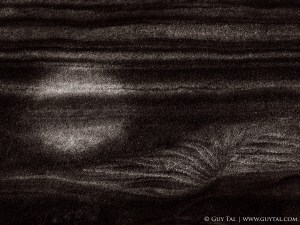Complex Art
Art is too complex and diverse to be explicable in terms of a single category such as the aesthetic. ‘Artistic value’ is constituted by a set of different kinds of value. The modes of appreciating art, the means to understanding art, the kinds of objects that are artworks are also all plural.
—Robert Stecker
There are many ways to appreciate art: to gain value from art. The most common and obvious way is to revel in beauty: to feel aesthetic pleasure. But not all art is intended to be beautiful, nor is beauty the only way to get pleasure from art. All modes of art appreciation are founded in the idea of art, not as a thing but as an experience, and there are many kinds of experiences that art may reward us with beyond just aesthetic delight. Some of these experiences are intuitive, others are more complex, requiring cognitive effort and investment of time, but may be no less rewarding. In fact, when we consent to and invest in seeking some of these more complex experiences, the rewards may be enormously satisfying, sometimes in ways and to extents that simple—even if abundant—aesthetic beauty alone can never impart.
What I mean by complex art is art that aims to convey or to arouse richer, deeper, less obvious, perhaps even ineffable impressions than can be summed up in simplistic statements, such as “here’s something pretty,” or “look where I’ve been,” or “this will look good on your wall.”
What inspired these thoughts was a recent brouhaha related to a contentious work by artist Maurizio Cattelan titled Comedian, consisting of a banana duct-taped to a wall—that sold (more than once) for several million dollars. Many who responded to Comedian with derisive comments, I’m sure, felt justified in their ire. I suspect that it did not occur to them that this reflexive sentiment was in fact just one possible way to experience and react to the artwork. On the other hand, some people (a minority, to be sure) found great joy in considering the piece and its implications: what it stood for, why it is art, why it garnered such high bids, and that—horror of horrors—at least in some ways, it may even be considered as more important and satisfying art than so many “epic” views of familiar scenery.
Before reading further, please ask yourself this: which do you prefer to feel when experiencing a work of art: indignant cynicism or deep interest? Frustration or joy? Confusion or understanding? Boredom or entertainment? Why is it that some of those who chose the latter answers to these questions also choose to be in the minority when it comes to experiencing complex art? Has is not occurred to them that they have a choice in the matter?
I’m not here to tell you that Comedian is good art. In fact, I think it’s ridiculous. But that is exactly why I find it so interesting. Note that by “it” I don’t mean the actual piece, but the experience, context, and commentary surrounding it. Rather than dismissing it offhand as silliness or caprice, I found it (and other works like it) wonderfully entertaining, making powerful statements about what makes something art and about the kind of people who spend fortunes on such art. Do they not realize they are playing themselves into sad stereotypes of callous materialism? Are they in on the joke? Are they that desperate for attention? Do they care? And that is exactly the point: not to find definitive answers, but to take pleasure in formulating and attempting to answer such questions, which may seem on their face simple and obvious but in truth are far from that. People have asked these and similar questions about romantic art, impressionist art, and practically all the major art movements that followed.
There are many volumes of philosophical writings about the thoughts and history leading to and manifested in complex art, some deeply interesting and intellectually stimulating. Speaking for myself, I did not always understand or accept such art, but once I’ve learned some of the philosophies and history of it and learned to appreciate it for what it is (i.e., something other than decorative, pleasing objects), I can now say I have spent much more—and much more enjoyable—times learning and thinking about works of complex art than so many aesthetic works that took me no further than “oh, what a lovely view,” or, “I see you’ve been there, too”—works about which, try as I might, I could not formulate any deeply probing questions about things that were not obvious to me at first glance.
To be sure, if I had to choose artworks to decorate my home with, live with day-in-and-day-out, or be reminded of a place, person, or phenomenon I love, I would choose works of great beauty. As an artist, these are also the kinds of artworks I prefer to create because I enjoy the experience of making them, which to me is more important than the experience of having others praise them. Also, because I don’t like to be the subject of too much public attention. But when I wish to be challenged by art, think deeply about art, engage intellectually with art, learn something about art, about certain artists, or about myself, I look to complex art: art that does not reveal its raison d’être easily, or at all: art that makes me work, gives me room to fill in my own stories and conjectures, even if imaginary. Even if different from what the artist had intended.
When we say that one work of art is “better” than another, we rarely stop to consider what we mean by “better,” or the fact that “better” is a relative term. Better for what? Better for whom? Better in what way? Better at making a room prettier? Better at making the artist wealthy and/or famous? Better at stumping the mind with mysteries to decipher or ineffable feelings to process? Better at drawing attention to philosophy of art or life or some social phenomenon?
A great hurdle to the appreciation of complex art now comes from social media. Many consumers of art today mostly observe passively as algorithms serve them with artworks to react to with minimal or no engagement—perhaps a “like,” or a swipe, an “emoji,” or posting a short comment. Gone are the times when people had to go out of their way to see and engage with art in specialized venues or in books, and sometimes responded to complex, innovative, non-obvious art with prolonged treatises (in some cases even street riots) expressing impassioned feelings of approval (or offense) or waxing philosophically about what such art meant or could mean, why it is (or isn’t) good or important.
I believe that complex art is especially important in times such as we live in: times of great social upheaval; times that to many are challenging or even threatening; times when passive consumption of served-up content may lead one to pervasive frustration, depression, hopelessness, meaninglessness. Art can help greatly in such times, if only as a rewarding distraction from the day-to-day tedium or—more appropriately—as validation that we only get so many opportunities in life to experience such profoundly meaningful things as awe or inspiration and we’ll be wise to take any opportunity to elevate our lives by them. Complex art—if we choose to engage in it, invest time in it, study its history and/or philosophy, formulate opinions about it, contemplate it, discuss it, write about it, find meaning in it—can do so even more powerfully than simple, benign art that aims no higher than to be aesthetically pleasing. Why not jump at the opportunity?
This is not to say that simple art is in any way unimportant or less satisfying than complex art, only that its effects are different and tend to be comparatively short-lived, more palliative than profound, more sedative than stimulating, more calming than exciting. All important, useful, and rewarding at times, but why not gain even more from art when we are free to do so?




